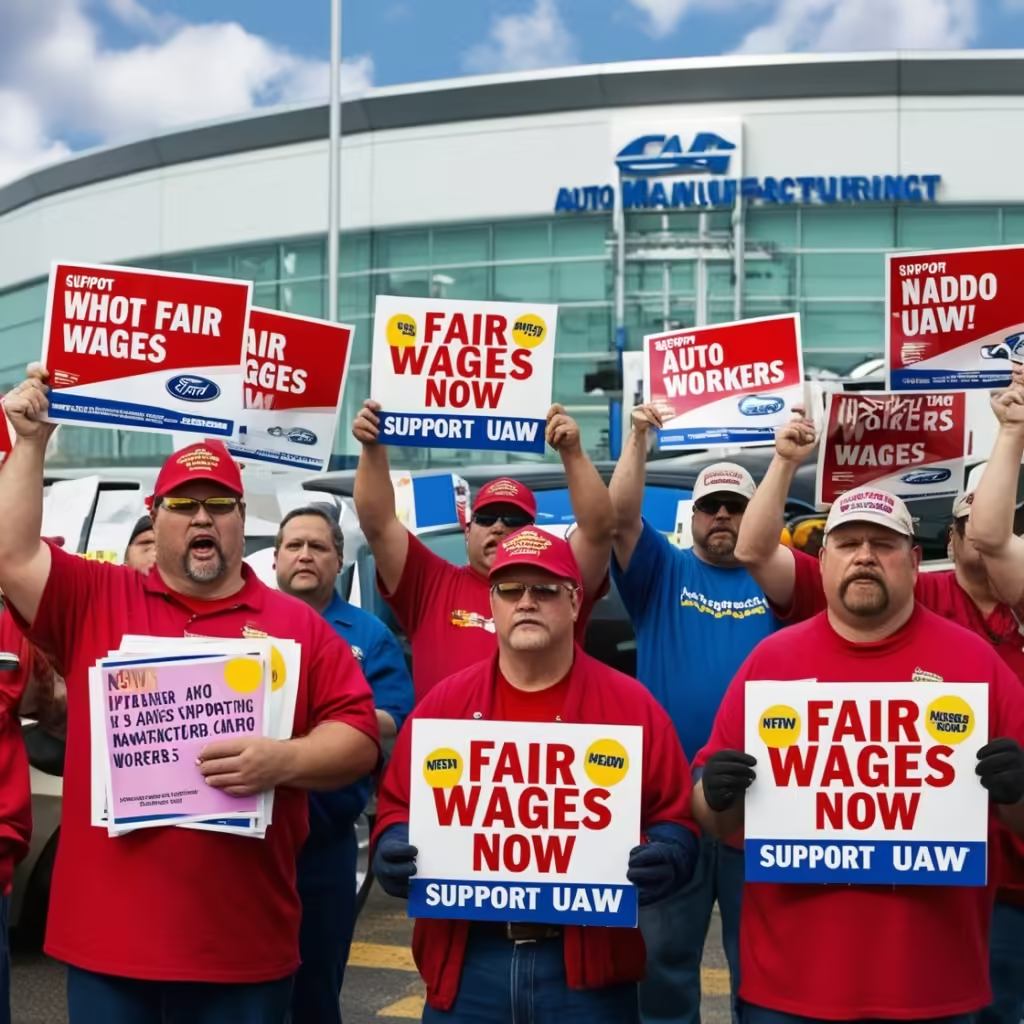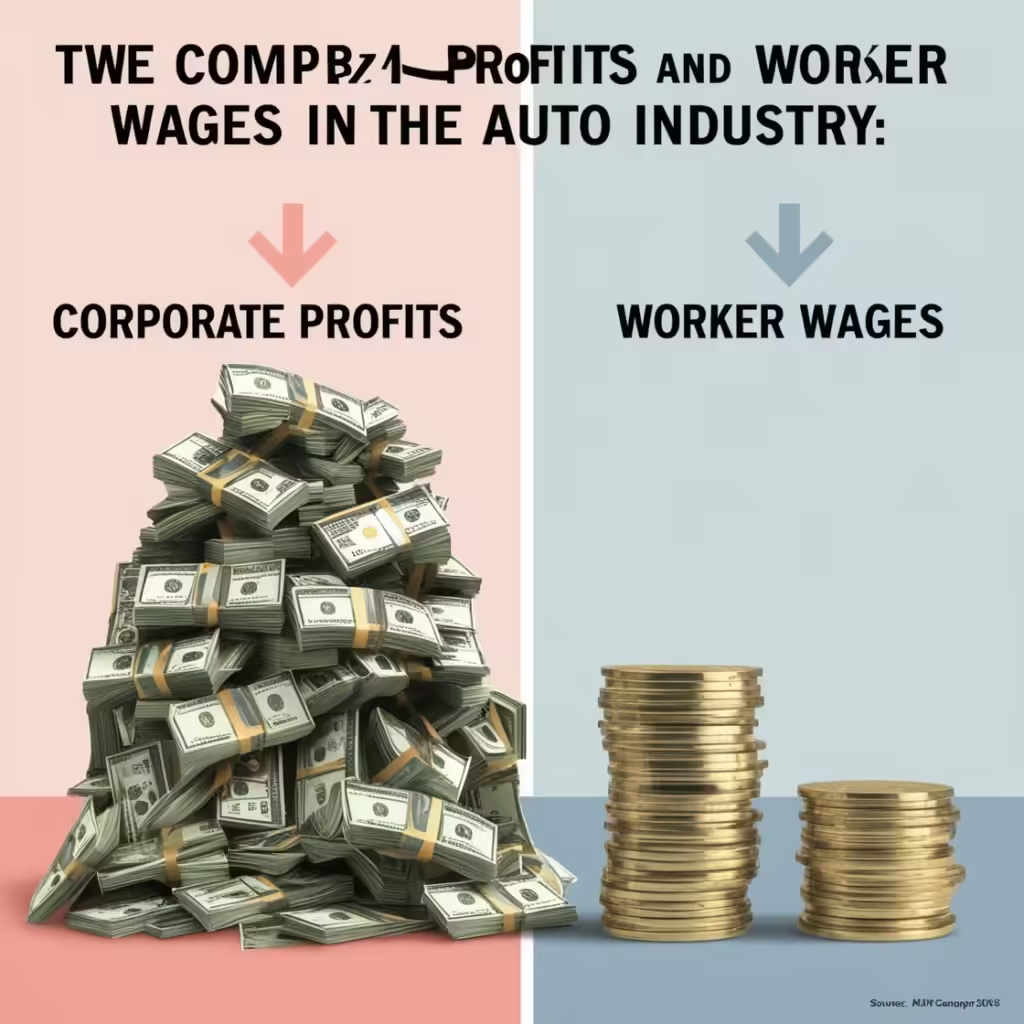UAW Strike and Labor Rights: A Turning Point in American Labor Movements
The ongoing United Auto Workers (UAW) strike has become one of the most significant labor movements in recent U.S. history, reflecting broader shifts in worker sentiment and labor rights. As tens of thousands of UAW members strike against major automakers like General Motors (GM), Ford, and Stellantis, their demands for better wages, job security, and benefits highlight a growing discontent among American workers. This blog explores the key issues behind the strike, the broader impact on labor rights, and what this movement means for the future of American industry.

The Background of the UAW Strike
The United Auto Workers union, representing approximately 150,000 workers across the Big Three automakers, began striking in September 2023. The strike came after contract negotiations failed to meet workers’ demands for wage increases, improved benefits, and job security. UAW leaders argue that while corporate profits have soared, worker compensation has stagnated, making it increasingly difficult for auto workers to keep up with rising costs of living.
Notably, this strike is different from previous labor actions because the UAW has adopted a new “stand-up strike” strategy. Instead of striking at all facilities at once, workers are targeting specific plants in waves, creating more uncertainty and pressure on automakers while limiting the financial strain on union members.
Key Demands of the UAW Strike
- Wage Increases: UAW members are pushing for a significant wage hike after years of stagnant pay despite record profits for automakers. Workers want pay raises that match inflation and help them regain purchasing power lost over the last decade.
- Job Security: With the rise of electric vehicles (EVs), many auto workers fear their jobs may be outsourced or replaced by automated systems. The UAW is demanding job protections as automakers transition to EVs to ensure workers are not left behind in this new era of transportation.
- Benefits and Pensions: Along with higher wages, UAW members are fighting for improved benefits, including better health care and the return of traditional pension plans. Many workers currently rely on 401(k) plans, which are more volatile than the pensions offered in previous decades.
- Shorter Workweeks: The union has proposed a 32-hour workweek without a reduction in pay. This demand is part of a broader trend among workers seeking better work-life balance and less burnout.
The Wider Implications for Labor Rights
The UAW strike is about more than just auto workers—it is a reflection of a larger labor movement gaining momentum across the U.S. In recent years, workers in various industries, from retail to healthcare, have gone on strike to demand fairer wages, better working conditions, and stronger benefits.
This strike is emblematic of the increasing frustration among workers who feel left behind by corporate profits and economic growth. It also highlights the role that labor unions play in protecting workers’ rights, particularly at a time when wealth inequality is widening.
Moreover, the UAW strike could set a precedent for other labor movements. If the UAW succeeds in securing significant gains for its members, it could inspire workers in other industries to demand similar improvements. This strike may also prompt a reevaluation of how corporations distribute profits and treat their workforce, potentially reshaping the American labor landscape for years to come.
The Impact on the U.S. Economy
The UAW strike has already had a ripple effect on the U.S. economy. Auto production has slowed, and experts estimate that prolonged strikes could cost the industry billions of dollars. As the strike drags on, the disruption could affect not only car manufacturing but also the supply chain, including parts suppliers and other related industries.
Furthermore, the strike’s outcome could influence how companies in other sectors approach labor negotiations. If automakers are forced to meet workers’ demands, other corporations may face similar pressure to improve compensation and benefits for their employees.
The Future of Labor Rights in America
The UAW strike represents a potential turning point in American labor rights. With growing support for unionization and labor strikes across multiple industries, the fight for better wages, benefits, and job security is gaining momentum. As the UAW continues to stand firm in its demands, other workers are watching closely, hoping that the outcome will pave the way for broader improvements in labor conditions across the U.S.

Conclusion
The UAW strike is more than just a battle between auto workers and automakers—it is a reflection of the growing demand for stronger labor rights across the country. As negotiations continue, the outcome of this strike could have far-reaching implications for the future of American industry, workers, and the economy.



